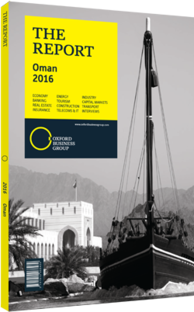Integrated tourism complexes have been a success in Oman
Integrated tourism complexes (ITCs) are a key magnet for investment in the real estate sector. ITCs are zoned areas that allow foreign nationals to own property on a freehold basis, and mostly also grant investors two-year visas, renewable on application. Generally, only leaseholds are available to non-Omanis.
Success Stories
At present, Muscat has three main ITCs in operation, Al Mouj Muscat (once known as The Wave and now rebranded with the Arabic word for “wave”), Shangri-La’s Barr Al Jissah Resort and Spa, and Muscat Hills. All have vacancy rates close to zero, and boast among the highest rents and capital values in the country. A two bedroom-unit at Al Mouj rents for around OR850 ($2201) a month, while a similar unit at Muscat Hills rents at around OR750 ($1942), according to Savills. For a four-bedroom or larger property, rents can rise to around OR1950 ($5049). Sales prices at ITCs range from OR96,800 ($250,615), or OR1019 ($2638) per sq metre (psm) for a one-bedroom apartment, to OR610,000 ($1.58m), or OR1333 ($3451) psm for a large villa of five or more bedrooms. An average of OR1100 ($2848) psm is common.
Residency at Al Mouj hit around 4000 in 2015 according to the development. Demand has been strong, with the project’s appeal based particularly on its brand, quality, location and range of on-site facilities and services, including a community mall, nursery, gymnasium and marina. The next group of units at Al Mouj to be offered on the market is Marsa One, on the marina, which is seen as a pace-setter for high-end residential property in Muscat. Two-bedroom apartments were being offered there for OR1250 ($3236) to OR1500 ($3884) a month in late 2015. Juman One apartments, which are likewise situated on the marina, also came onto the market, with prices as high as OR806,000 ($2.09m), or more than OR1600 ($4142) psm. Muscat Hills has also attracted strong demand for its phase two properties, which had reached an occupancy rate of 100% by autumn 2015.
Unlike other parts of the capital’s real estate market, Muscat’s ITCs have not seen oversupply or less well designed projects dragging prices downwards. Barriers to entry to developing ITCs are significant, particularly for small and mid-sized local developers with limited capital-raising power. “ITCs cost more to develop, but the payoff is far higher,” M Sudhakar Reddy, CEO of Al Habib, an Omani real estate company, told OBG. “You need huge upfront capital. Lots of developers can target the OR1m-2m ($2.59m-5.18m) range, but very few have capacity for ITCs.”
Shifting Demand
While ITCs were originally intended to support tourist demand, they have over time become a focus for longer-term tenants and owner-occupiers. There has been a shift in investor profile at Al Mouj in particular, with most buyers now Arab nationals, according to Christopher Steel, managing partner at Savills Oman, a real estate company, told OBG. Younger professionals are also drawn to ITCs, which are seen as prestigious addresses, as well as appropriate places to raise families.
However, upcoming projects may be more focused on meeting tourist demand. For instance, the first phase of Saraya Bandar Jissah is due to be completed by 2017, including two luxury hotels. In September 2015, the developer signed an OR106m ($274.4m) deal with Bank Muscat and Bank Dhofar to finance the project, which will have three “residential” zones.
Moreover, in July 2015 Omagine LLC gained rights on 1m sq metre of beachfront land in Seeb, Muscat, for the development of its $2.5m Omagine project, which is set to include a theme park, a five-star and a four-star hotel, and potentially also a mid-range hotel. “The lack of hotels has driven up prices but driven down quality, as the existing hotels do not feel like they need to compete or to upgrade their service offerings,” Wael Jamal, general manager at Alfardan Properties Management, told OBG. “As a result, there is room for further investment in hospitality.”
You have reached the limit of premium articles you can view for free.
Choose from the options below to purchase print or digital editions of our Reports. You can also purchase a website subscription giving you unlimited access to all of our Reports online for 12 months.
If you have already purchased this Report or have a website subscription, please login to continue.

